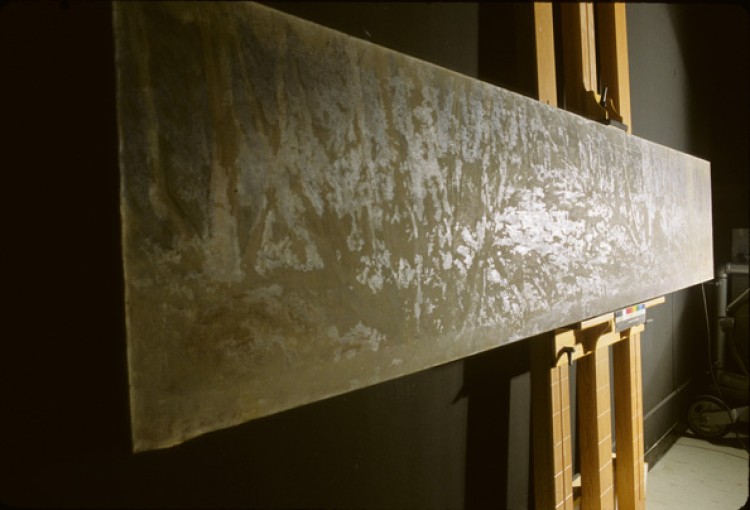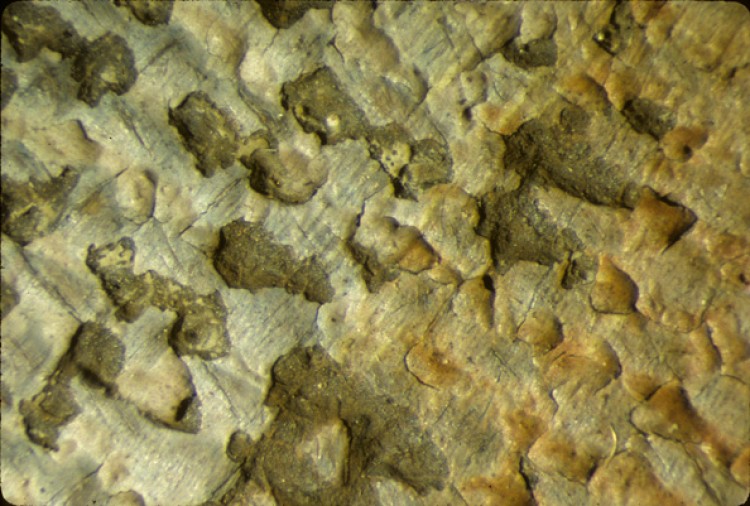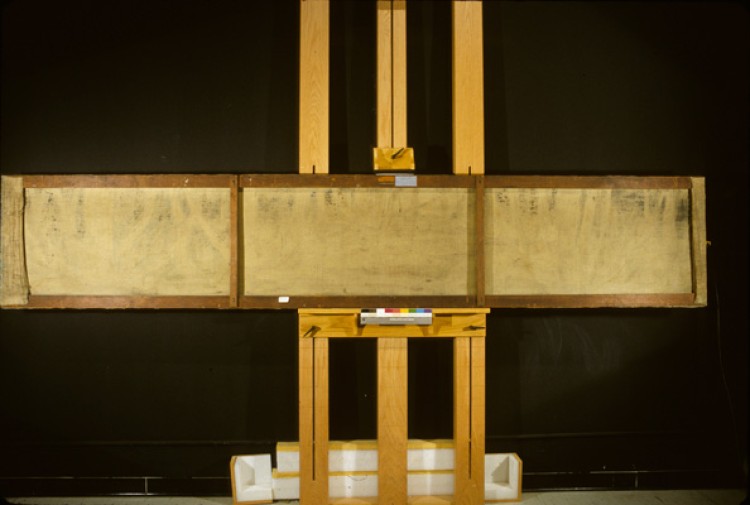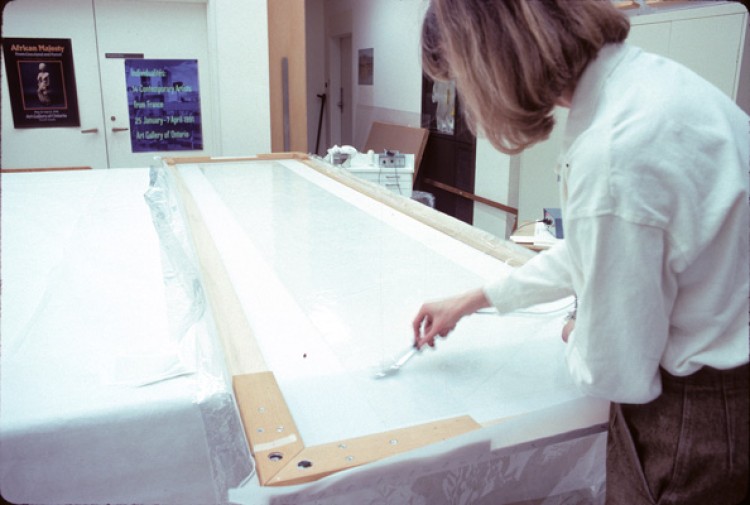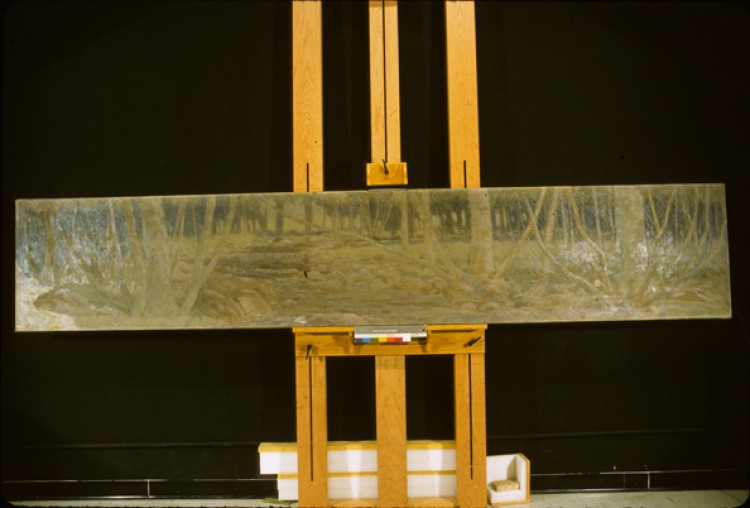Introduction: Dirty Times
George Reid painted this as a wall mural in 1911 for his studio in Toronto’s Wychwood Park. This space had a coal burning fireplace, a typical source of heating of the time. Fine blackdust (soot) from the fireplace built up on the painting over time.
The image above shows the left side cleaned, while the right side has not yet been cleaned and is covered with black dirt. Read on to learn how it was repaired and conserved for future enjoyment.
Making it Stable
When this painting came to the AGO, it was not only dirty but also very fragile. There was extensive cracking of the paint layers, the canvas was weak and paint was flaking off its surface. To prevent further paint loss and to ensure safe handling, the areas of flaking paint were secured to the under layer with a stable reversible adhesive.
In the image above, paint loss is displayed as glossy areas in reflected light. The images below show paint loss areas close-up.
New Lining
The entire canvas then received a new lining. A strong but thin fabric was applied to the back using reversible adhesive and then the painting was attached on a wooden structure called a stretcher.
The images below demonstrate the lining process.
Before
Applying the Lining
After
Clean-Up
Once the work was stabilized, it was possible to begin cleaning it. Using tiny cotton swabs and various solvents and solutions, black dirt and excess adhesive was removed. The lighter area on the left has been cleaned and you can see the original colours of the painting. The conservation of this painting is still a work in progress. Look for the partially cleaned area just left of the still soiled right end.
The image above shows the painting at beginning of treatment, with only small corner cleaned.
What Next?
Now that the original colours are visible, areas of paint loss may be retouched with a stable reversible material, so visitors can experience the work as the artist intended.
Why Reversible?
As much as possible, conservators make sure all aspects of their treatments, are reversible. This enhances compatibility with any future conservation treatments that may be required, and maintains respect for the artist’s original work.

